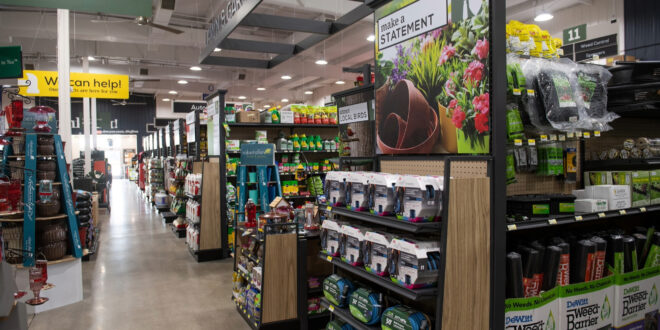IN TODAY’S COMPETITIVE MARKET, having the right products on store shelves is crucial to an operation’s success. Do it Best leverages data to ensure its members’ stores are stocked with the products their customers need.
“With data from over 4,000 independent locations, strategic vendors and extensive wholesaler data, we offer tailored solutions that drive innovation and propel our members’ businesses forward,” says vice president of merchandising Jason Stofleth. “Our team conducts comprehensive data analyses to provide product recommendations and customized solutions.”
Do it Best creates planograms using members’ POS, wholesale, vendor and regional data.
“Our precision-engineered approach optimizes inventory and improves product placement to match shopper behavior and preferences, driving increased sales and maximizing shelf space,” Stofleth says. “Maintaining the right stock levels reduces overstock and stockouts, leading to happier, more loyal customers.”
A component of the company’s strategy is confirming products are consistently in stock and readily available on members’ shelves.
“We maintain high fill rates, leading the industry at 97%. This ensures that customers can always find what they need when they shop at our members’ stores, enhancing reliability, customer satisfaction and loyalty,” Stofleth says.
Do it Best checks its recommendations against its Inventory Productivity Analysis (IPA) tool to verify that every product on members’ shelves has a purpose. The company’s IPA tool uses data to create visual depictions and heat maps of members’ stores, highlighting slow-moving inventory and providing opportunities to update product offerings.
“The process starts with creating a detailed floor plan. Once the floor plan is labeled with planogram locations, a heat map can show performance based on selected date ranges and various success metrics,” Stofleth says. “The heat map uses color codes to identify areas needing attention. By clicking on a specific planogram, detailed information such as SKUs, item descriptions, quantities sold and pricing is available, allowing our members to make well-informed decisions.”
While data analysis is a powerful tool for effective merchandising, intuition, customer knowledge and experience are equally important.
“Combined with our data-driven insights, these elements create a comprehensive approach to inventory management,” Stofleth says. “Integrating the art and science of retail ensures that our members can thrive in a constantly changing marketplace.”
 Hardware Retailing The Industry's Source for Insights and Information
Hardware Retailing The Industry's Source for Insights and Information






